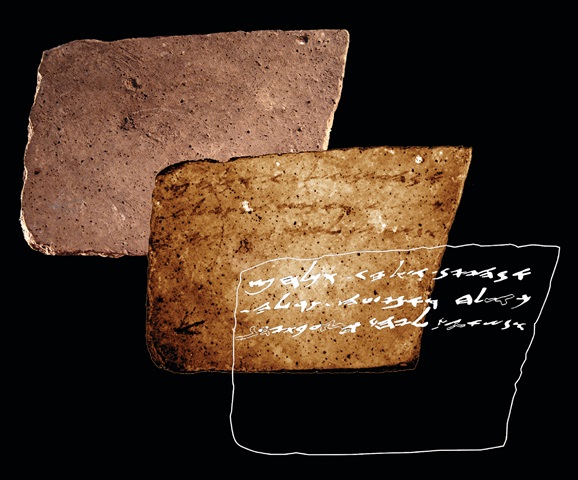
“Invisible” Shard Reveals First Temple Era Inscription
An ancient text thought to have been erased by the sands of time has been been brought back to life by researchers at Tel Aviv University.
Using advanced imaging technology, a multi-disciplinary team managed to reveal a hitherto invisible inscription on the back of a pottery shard that has been on display at The Israel Museum for more than 50 years.
The ink-inscribed shard was found in 1965 at Tel Arad, an ancient desert fortress located near the modern city of Arad.The site served as a military outpost on the southern border of the kingdom of Judah and was populated by 20 to 30 soldiers. Most of the ostrace, including the latest artifact, date to around 600 BCE, shortly before the kingdom of Judah’s destruction in 586 BCE by the Babylonian king Nebuchadnezzar II.
The front side of the shard discusses money transfers, but the back side was considered blank. However thanks to the use of multispectral imaging researchers were able to decipher 50 characters, comprising 17 words, on the back of the ostracon. After deciphering the text, researchers now believe that the reverse side is a continuation of the text on the front side.”
Dr. Anat Mendel-Geberovich of TAU’s Department of Archaeology explained that “many of these inscriptions are addressed to Elyashiv, the quartermaster of the [Arad] fortress. They deal with the logistics of the outpost, such as the supply of flour, wine and oil to subordinate units. ”
“The new inscription,” added Arie Shaus of the university’s Applied Mathematics department, “begins with a request for wine, as well as a guarantee for assistance if the addressee has any requests of his own. It concludes with a request for the provision of a certain commodity to an unnamed person, and a note regarding a ‘bath,’ an ancient measurement of wine, carried by a man named Ge’alyahu.”
Mendel-Geberovich said that while the newly revealed inscription features an administrative text, like most of the Arad inscriptions, its importance lies in the fact that “each new line, word and even a single sign is a precious addition to what we know about the First Temple period.”